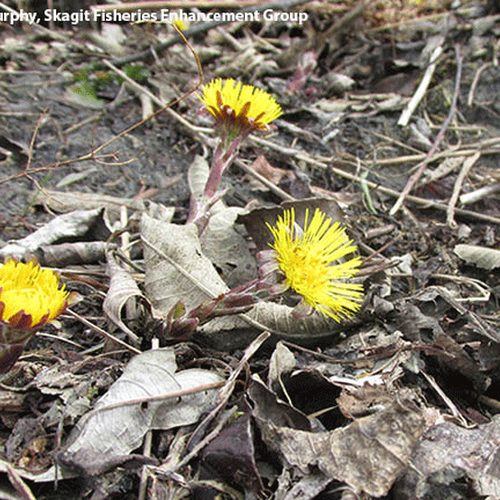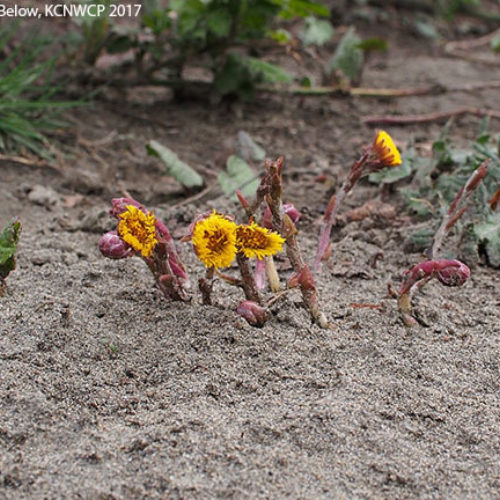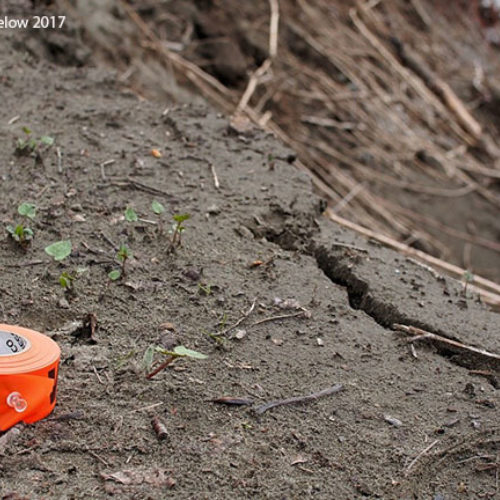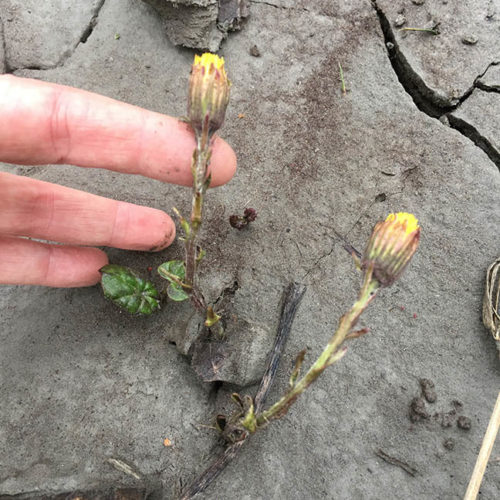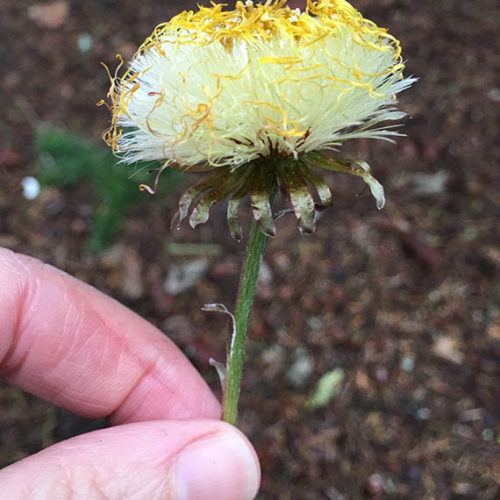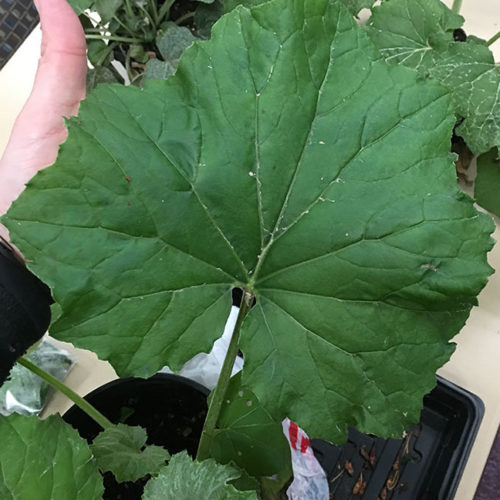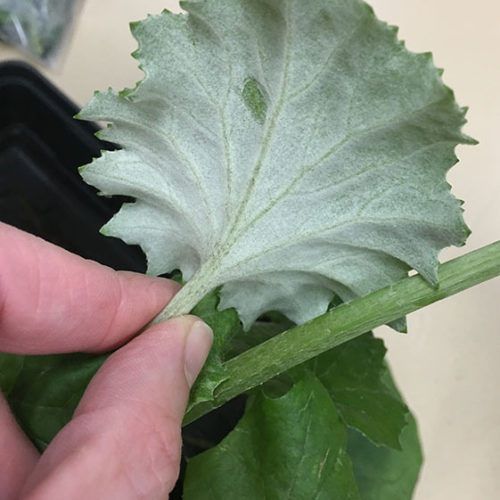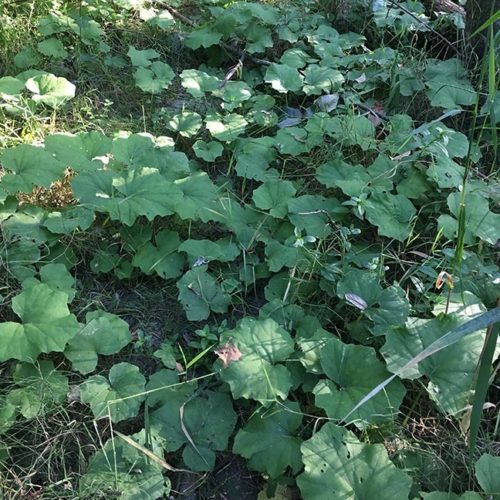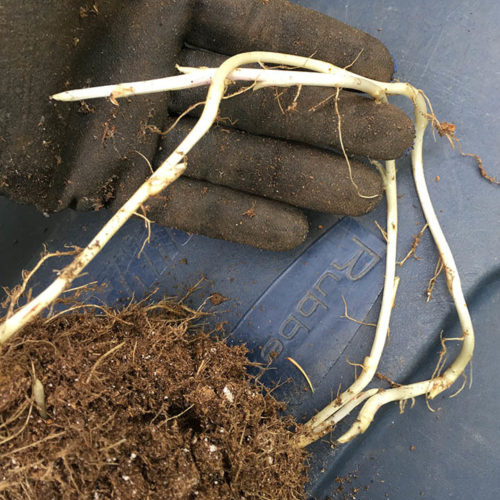European Coltsfoot
Tussilago farfara

Family: Asteraceae
Other Scientific Names:
Cineraria farfara, Farfara radiata, Tussilago alpestris, Tussilago umbertina
Other Common Names: coltsfoot, bullsfoot, coughwort, butterbur, horsehoof, foalswort, fieldhove, English tobacco, hallfoot
Weed class: B
Year Listed: 2018
Native to: Europe and northern Africa
Is this Weed Toxic?:
European coltsfoot is known to contain small amounts of toxic pyrrolizidine alkaloids, but they may be present in a small enough amount to not cause harm if the quantity, when used medicinally, is closely monitored.
Legal listings:
This plant is also on the Washington State quarantine list. It is prohibited to transport, buy, sell, offer for sale, or distribute plants or plant parts of quarantined species into or within the state of Washington or to sell, offer for sale, or distribute seed packets of seed, flower seed blends, or wildflower mixes of quarantined species into or within the state of Washington. Please see WAC 16-752 for more information on the quarantine list. For questions about the quarantine list, contact the Washington State Department of Agriculture's Plant Services Program at (360) 902-1874 or email PlantServices@agr.wa.gov.
Why Is It a Noxious Weed?
This is a new Class B noxious weed for 2018. European coltsfoot is a rhizomatous perennial that thrives in open to shaded disturbed habitats, forming extensive colonies. It is a known weed in European agricultural systems, where it is difficult to control, as well as native plant communities. In Washington, European coltsfoot has established in riparian areas after knotweed (Polygonum species) control.
How would I identify it?
General Description
European coltsfoot is a rhizomatous perennial, growing up to 19.7 inches, which can form extensive colonies. Plants first send up flowering stems in the spring, each with a single yellow flowerhead. Just before or after flowers have formed seeds, basal leaves on long petioles grow from the rhizomes, with somewhat roundish leaf blades that are more or less white-woolly on the undersides.
Flower Description
European coltsfoot yellow daisy-like flowerhead is solitary, having yellow ray and disk flowers, at stem tips.
Leaf description
European coltsfoot has two types of leaves: flowering stem leaves and basal leaves.
Leaves on the flowering stems are alternately arranged, small and can have a purple tinge. Ranging in size from 0.2 to 1 inch, they have entire margins, are lance-ovate to linear shaped, with sparse long hairs and purple-tipped glands. Basal leaves develop after flowering stems, on petioles 1.2 to 13.8 inches long, and grow from the rhizomes in rosettes. The leaf blades are 2 to 11.8 inches long, heart-shaped to orbicular to triangular with narrow indentation at base and possibly, shallowly 5 to 12 lobed or angled with irregularly small-toothed margins. Topside of leaves is hairless or with some hairs, undersides more or less white and woolly (gray-tomentose).
Stem description
Stems are erect and unbranched, arising from the ground before the basal leaves and terminate in a flowerhead. Stems grow in small clusters.
Fruit Seed Description
Each fertile flower can produce a single, narrow seed (cypsela), 3 to 4 mm long, having 5 to 10 ribs. One end has numerous white, hair-like bristles (pappus), that are 8 to 12 mm long and help with wind dispersal. Seed production varies greatly, with estimates ranging from 157 (per flowerhead) to 3,500 seeds (per plant).
May Be Confused With
Our written findings includes a table that compares the following species with European coltsfoot:
Taraxacum officinale, common dandelion: perennial from a taproot that only has leaves at the base of the flowering stem, at the same time it is flowering.
Petasites frigidus var. palmatus, sweet coltsfoot: a native, rhizomatous perennial that has a flowering stem of many white flowerheads before its lobed leaves grow from the ground.
Adenocaulon bicolor, pathfinder: perennial from fibrous roots, also having woolly leaf undersides, but having small, whitish flowers at top of its leafy stem.
Where does it grow?
European coltsfoot commonly grows in open to shaded disturbed environments. Plants appear to favor moist to wet soils but can also survive in drier conditions. Herbarium and database records document European coltsfoot occurring at a limited number of locations in western Washington. Please click here to see a county level distribution map of European coltsfoot in Washington.
How Does it Reproduce?
Plants are able to reproduce by seed as well as spread vegetatively through the fragmentation of rhizomes.
How Do I Control It?
Removing invasive species can open up a habitat to re-invasion if follow up management does not occur, and European coltsfoot prefers these newly-disturbed open areas for establishment. Disturbed locations such as roadsides, trails, pond and river edges and areas that have undergone invasive plant removal, may be more vulnerable to invasion. Since this plant thrives in disturbed environments; where locations allow, minimize soil disturbance during management. When possible, carry out control methods when pollinators are not active on plants. Also, make sure to clean shoes, clothing, and equipment when leaving infestations to prevent spreading seeds and rhizome fragments to new locations.
Mechanical
Young plants and very small infestations may be able to be carefully dug out of the ground. All rhizome fragments will have to be carefully removed, as a fragment with even one node can form a new plant. Rhizomes are brittle and easily break off in the soil so this method may have limited success. Since fragments left in the soil may quickly resprout, the area will need to be visited multiple times each growing season to check and remove any resprouts. Careful repeated hand removal of rhizomes of a roadside population in Mount Rainer National Park still did not eliminate a small infestation during 2016, though plants were reduced in number. Rhizomes should be bagged and put in the trash.
Experiments have shown that European coltsfoot is resistant to burying. Also the rhizome depth can also make it difficult to control plants with stubble cultivation, ploughing, or hoeing as these methods may not reach the entire rhizome system.
Cultural
Establishing competitive perennial plants can reduce European coltsfoot populations. These species can also serve as a food source for pollinators.
Herbicide
Early detection is key when controlling European coltsfoot as populations can be difficult to control once they establish. Medium to large infestations may need chemical control for management.
Check the Pacific Northwest Weed Management Handbook for information: https://pnwhandbooks.org/ and click here for results from a preliminary herbicide greenhouse trial to see the susceptibility of coltsfoot to certain herbicides by Dr. Tim Miller, Washington State University Northwestern Washington Research and Extension Center. Further research herbicide research on European coltsfoot is still needed. For questions about specific herbicide use, please contact your county noxious weed coordinator.
For More Information
Written findings for European coltsfoot, Tussilago farfara
WTU image database for Tussilago farfara
USDA Forest Service information on Tussilago farfara


